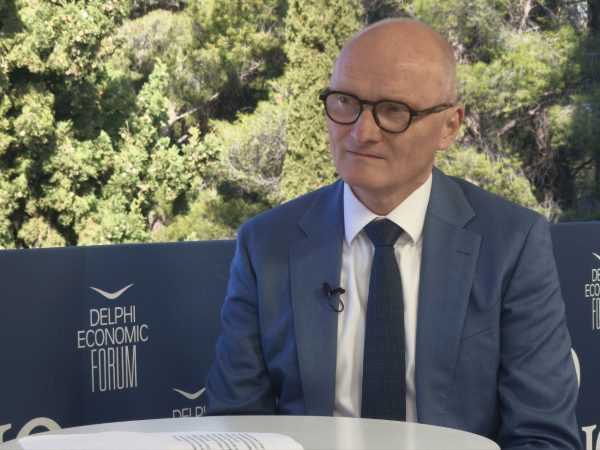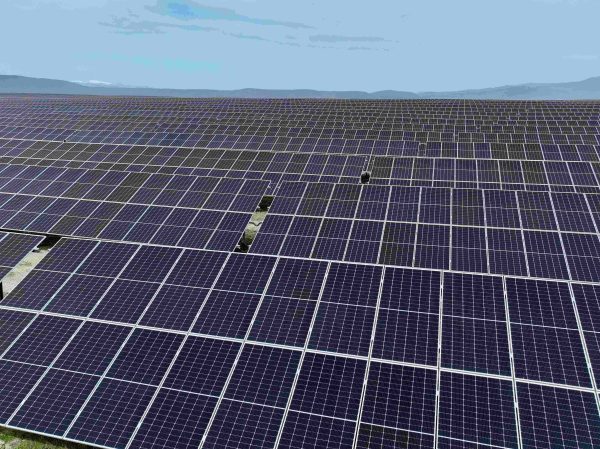
The first quarter of 2022 will be crucial for the course of the index of non-performing exposures of banks, as loans totaling 11.4 billion euros are coming out of the state support programs.
In addition to the macroeconomic turmoil of the pandemic that has inevitably led to a reduction in the incomes of many borrowers, additional pressures have been exerted since last September by inflationary processes.
And it seems that energy prices will remain high for at least a few more months after the Russian invasion of Ukraine.
In this context, the administrations of banks and debt management companies have already sounded the alarm about the aforementioned loans, as there are concerns about whether borrowers will be able to service their debts after the end of the grants.
The two subsidy actions
We are talking about the actions “GEFYRA 1” and “GEFYRA 2”, through which natural persons with loans connected to their main residence and companies respectively, secured a state subsidy for their installments.
In more detail:
– GEFYRA 1 supported 82,000 individuals with mortgages totaling 6 billion euros, for a period of 12 months after the 3-month extension of the aid.
The majority of these loans have completed the projected grant period at the end of 2021 and now borrowers will have to pay 100% of the installments.
– GEFYRA 2 concerns 13,000 legal entities with exposures of 5.4 billion euros, which secured a subsidy for their loan for 8 months, with amounts up to 80% of the installment.
All these loans will leave the grant status by the end of the first quarter.
Close monitoring
According to Ms. Fotini Ioannou, General Manager of Corporate and Retail Banking Receivables Management of the National Bank, “the geopolitical crisis could not have been predicted”.
Speaking at the recent FIN FORUM 2022 conference of the Bank of Greece, she said rising inflation and energy costs were likely to affect growth, possibly affecting household disposable income, which could lead to a new generation of red loans. ».
However, she stressed that it remains to be seen how the loans coming out of the support programs will behave, after the first quarter of 2022.
At present, according to her, there is no worrying early indication “that leads us to believe that we will have new flows of non-performing exposures. However, close monitoring is needed. ”
Banking sources say they are moderately optimistic about these exposures. Their point of view is based on two parameters:
First, there is a strong incentive for borrowers to default on their payments for a period of up to 18 months, depending on the situation in which their debt was before joining the GEFYRA program.
If someone misses even two installments during this period, all the help they received will be requested back. Therefore, they estimate that there will be no strategic defaulters, due to the high costs involved in blushing the loan.
Secondly, the majority of these loans have remained green in the past, despite the conditions prevailing due to the economic crisis in our country. Therefore, they have proved in practice that they are overcoming difficulties.
The new bankruptcy code
Otherwise, the wager is on the smooth operation of the new out-of-court debt settlement mechanism for banks, through which non-performing loans can be repaid.
According to Ms. Ioannou, to date, 48 thousand applications have been submitted, which are active and concern debts to banks and the State, of almost 16 billion euros. “These are applications that we need to process and find solutions,” she stressed.
She also referred to the body for the recovery of vulnerable households, which, as he said, “we must see how and when it will work”.
It is recalled that a few days ago it was announced the suspension of auctions for this category of borrowers for 15 months, ie until the establishment of the new body. During this period, in fact, they will receive a monthly housing allowance that can reach up to 210 euros.
However, in order to ensure the protection, they have to pay their own participation in the amount that will be set and which will correspond to the rent that they would pay if they rented their property.
When the institution operates, it will acquire their home and the borrowers can stay in it as tenants for up to 12 years if they wish. They will then have the right to buy it at the commercial value it will have at that time.
Latest News

German Ambassador to Greece Talks Ukraine, Rise of Far Right & Tariffs at Delphi Economic Forum X
Commenting on the political developments in his country, the German Ambassador stressed that it was clear the rapid formation of a new government was imperative, as the expectations across Europe showed.

Athens to Return Confiscated License Plates Ahead of Easter Holiday
Cases involving court orders will also be excluded from this measure.

Servicers: How More Properties Could Enter the Greek Market
Buying or renting a home is out of reach for many in Greece. Servicers propose faster processes and incentives to boost property supply and ease the housing crisis.

Greek Easter 2025: Price Hikes on Lamb, Eggs & Sweets
According to the Greek Consumers’ Institute, hosting an Easter dinner for eight now costs approximately €361.95 — an increase of €11 compared to 2024.

FM Gerapetritis Calls for Unified EU Response to Global Crises at EU Council
"Europe is navigating through unprecedented crises — wars, humanitarian disasters, climate emergencies," he stated.

Holy Week Store Hours in Greece
Retail stores across Greece are now operating on extended holiday hours for Holy Week, following their Sunday opening on April 13. The move aims to accommodate consumers ahead of Easter, but merchants remain cautious amid sluggish market activity.

Green Getaway Ideas for Easter 2025 in Greece
Celebrate Easter 2025 in Greece the sustainable way with eco-farms, car-free islands, and family-friendly getaways rooted in nature and tradition.

Civil Protection Minister Details Summer Firefighting Plans at Delphi Forum
At the 10th Delphi Economic Forum, Minister of Climate Crisis and Civil Protection Yiannis Kefalogiannis discussed Greece's plans for the upcoming fire season.

How Shops and Markets Will Operate During Easter Holy Week
The Easter holiday schedule has been in effect since April 10, with retail stores open Palm Sunday, and most supermarkets also operating to meet consumer demand for Easter shopping

Why Is the French Aircraft Carrier Charles De Gaulle in Piraeus?
Docking in Piraeus after a four-month deployment in the Indo-Pacific region, the admiral of the aircraft carrier the Charles de Gaulle says, "Greece is our best partner in the Mediterranean."





























![F-35: Το ακριβό μαχητικό που διεκδικούν αρκετές χώρες [γράφημα]](https://www.ot.gr/wp-content/uploads/2025/03/f-35-1-600x400.jpg)










 Αριθμός Πιστοποίησης
Αριθμός Πιστοποίησης